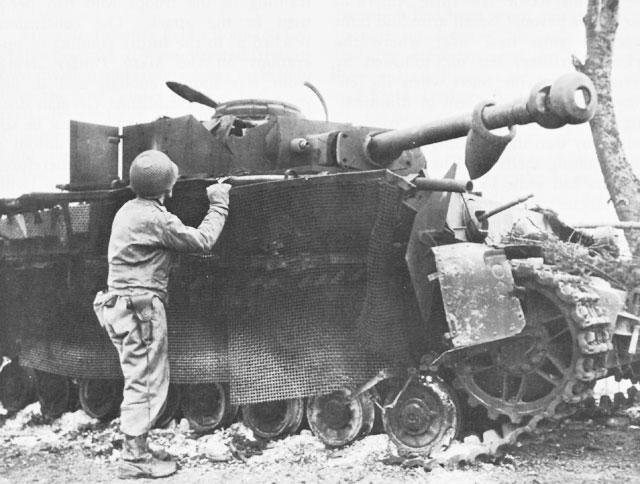I remember that photo from “Deutsche Panzer raritaten 1935-45”.
And here I thought they were out wassailing…
Agreed. This is a german small boat with some kind of machinegun wich is not german.

If you were going to go to the trouble of constructing what looks like an armoured sled, why wouldn’t you add another foot or so of armour with gun ports instead of leaving the riflemen’s heads fully exposed? As it is, a shot from one side can hit riflemen on either side.
Is it actually armoured? It looks like it’s intended for snowy conditions, in which case the ground pressure would be critical. Anything heavier than splinter plate would probably be too much.
And an airburst from a mortar or AAA gun would just cream them. It would be a death slead. Even a thrown grenade exploding over them would be awful.
Deaf
On closer inspection in light of your post, you may well be correct.
But why bother using a tank to push a sled with about a section of riflemen aboard when a similar firepower, and tactically more flexible and better, result could be achieved more easily and cheaply with two or three Bren carrier type vehicles adapted for snow with suitable MGs with a tank independently in the rear? Or forward, or anywhere else it wants to go for tactical advantage without being bound to the sled?
They had no an equivalent ot the bren carrier, the most close was the KFZ 2 Kettenkrad, but it was unarmored. The trolley was armored to withstand mg fire.
And they way the Bren carrier was also unarmored in the top so a mortar would cream the crew too.
I imagine that this was no battle-sled, and was only a way of ferrying troops around behind, and to, the lines…
Because something like that can be knocked up quickly and easily with some scrap steel and an arc welder, and can then be towed by any available tracked vehicle. Specialist vehicles (which as PK correctly notes the Germans didn’t even produce) would often be unavailable - hardly a surprise given the appalling state of the German supply lines in Russia, where any such sledge-type arrangement would presumably be used.
Never heard of these before…

So-called “Bazooka pants” on a German Panzer IV-J, not to mix up with the regular solid steel skirts. These net-like “pants” were suppose to offer an extra protection against all kinds of rocket-type weapons but were clearly a sign of German late-war resource shortage as well.
booth side armors have been tested in 1943 : the “Thoma” wire netting gave the best results against anti-tank 14.5mm russian rifle. But at this time they didn’t found how to fix them correctly on each side there for the others were choosen.
It’s only late 44 that they made hinged supports fixed to a tube and started production.
Among problems posed by the full skirts, there is for example the weight and the fact that if they stop well the first missile they can be so damaged that they do not serve any more much later. And wire nettings improve the camouflage of the machine and weigh much less heavy.
As we can see the Soviets did something similar to get some extra protection for the turrets by the end of the war…

Photo taken in Berlin, May 1945.
And used today. I believe such a device might useless against ballistic projectiles or perpetrators (I think I’ve read that applique “armor” such as logs or sandbags were useless against German tank shells, but were effective and lessening the hit from panzerfausts), but were intended to detonate/dissipate HEAT rounds before it could contact the armor plate…

Actually the wiremesh screens were very effective at defeating smaller brittle core ATR completely destroying them before they could damage the belly armor. They also were effective and preventing HE ammo from damaging the tracks. They were never intended to defeat Shaped charge ammo, that was a unintended benifit.
Modern desendant is the perforated plate armor that is very effective at defeating various types of KE projectiles and has reasonably good Anti HEAT protection as well. Many tanks and AFVs have utilized this technology.
The “battle sled” posted earlier may not be for battle.
Accounts I have read suggest that such sleds were built primarily for towing supplies, and were only later used as evacuation vehicles, or to ferry troops about in rear-echelon areas.
I have a vague recollection of such things being mentioned in Sajer’s book, though I’d have to go back and re-read it to confirm this.
Kind Regards, Uyraell.
Bump. I’ve recently again seen some “stock footage” generally used in documentaries on Normandy after D-Day showing presumably a German (Heer?) sniper using a scoped British Lee Enfield. Has anyone else seen this?
Edit: Now that I think of it, I think he may have been a Fallschirmjäger wearing a camouflage tunic…
I stole this from axishistory.

U.S. soldiers riding on a British Churchill tank with one of them carrying a Sturmgewehr! :shock:
http://forum.axishistory.com/viewtopic.php?f=71&t=99382&start=105
